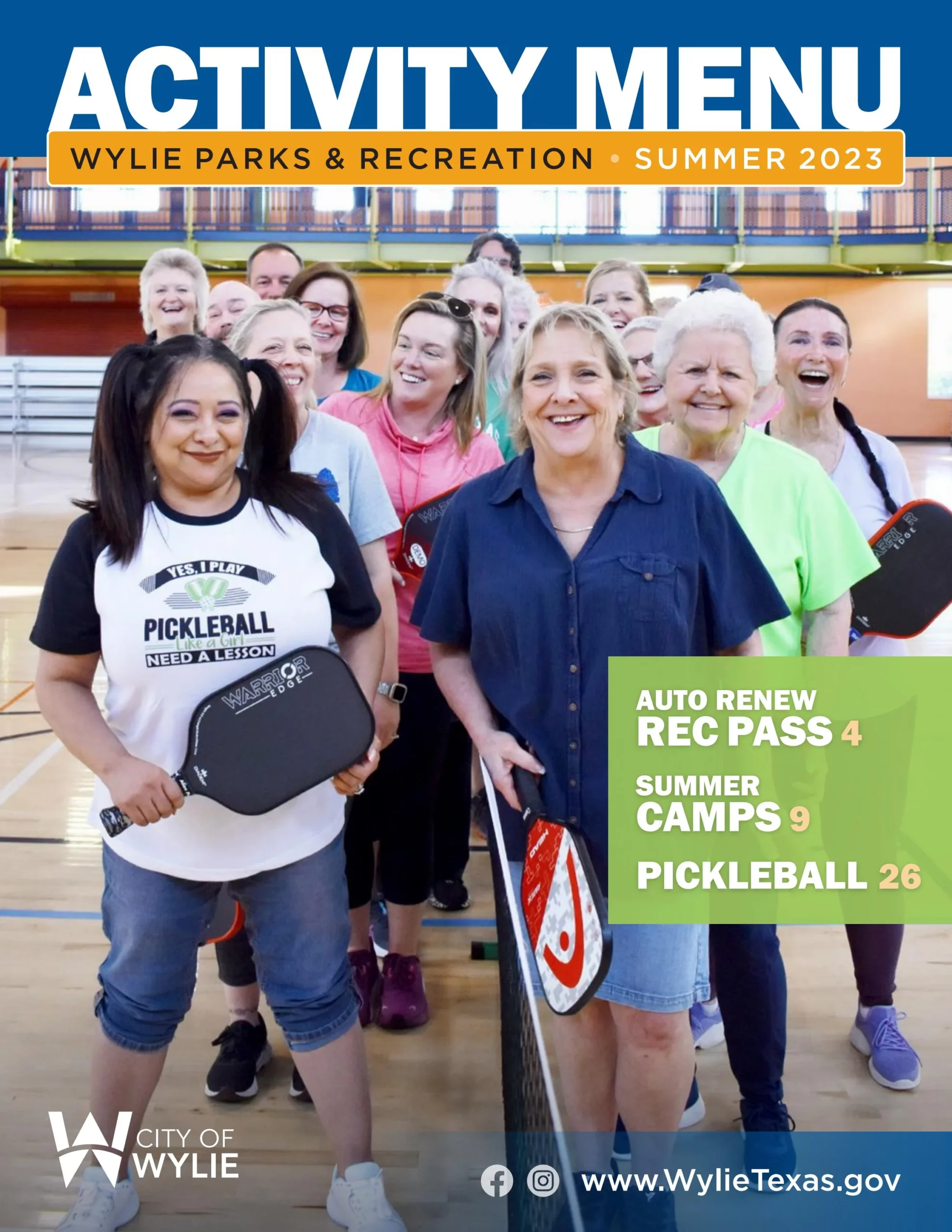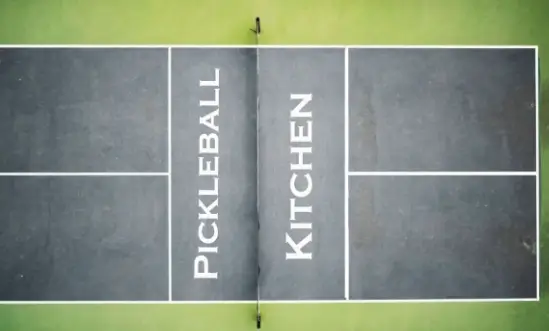The pickleball non-volley zone is referred to as the “kitchen” to prevent players from standing at the net and smashing every hit. It is believed that the name “kitchen” originated from shuffleboard, although the exact origin is uncertain.
1. Origins Of The Term “kitchen” In Pickleball
The Etymology Of The Term “kitchen” In Pickleball
The term “Kitchen” in Pickleball has an interesting etymology that dates back to its origins. It is believed that the term originated from the game of shuffleboard, which shares similarities with Pickleball. In shuffleboard, the area at the end of the court where players stand is called the “Kitchen.” This term was later adopted in Pickleball to refer to the non-volley zone on either side of the net.
Historical Evolution Of The Term In The Game
The term “Kitchen” in Pickleball has evolved over time, becoming the widely accepted term for the non-volley zone. Originally, this area was known as the “No Volley Zone,” but as the game grew in popularity, players started referring to it as the “Kitchen.” This evolution could be attributed to the similarity between the non-volley zone and the kitchen in shuffleboard. The term “Kitchen” has since become ingrained in Pickleball culture and is used by players across the world.
Here is a summary of the origins and evolution of the term “Kitchen” in Pickleball:
– The term originated from the game of shuffleboard, where the area at the end of the court is called the “Kitchen.”
– This term was later adopted in Pickleball to refer to the non-volley zone on either side of the net.
– Initially, the non-volley zone was known as the “No Volley Zone.”
– As the game gained popularity, players started referring to it as the “Kitchen,” possibly due to its similarity to the kitchen in shuffleboard.
– The term “Kitchen” has become widely accepted and is now used by players worldwide.
2. Understanding The Pickleball Non-volley Zone (nvz)
The non-volley zone (NVZ), also known as “the kitchen,” is a unique feature of pickleball that plays a crucial role in the game. In this section, we will delve deeper into the definition and purpose of the NVZ, as well as its significance in gameplay.
Definition And Purpose Of The Non-volley Zone
The non-volley zone, as indicated by its name, is an area of the pickleball court where players are not allowed to volley the ball. It is a seven-foot zone on either side of the net, extending from the net to a line parallel to it. Volleying refers to hitting the ball out of the air without allowing it to bounce first.
The purpose of the NVZ is to promote fair gameplay and prevent players from dominating the net by smashing every hit. By establishing this zone, pickleball ensures a balanced and strategic approach to the game, encouraging players to maintain control and use different shot techniques.
The Significance Of The Non-volley Zone In Gameplay
The NVZ holds significant importance in pickleball gameplay, contributing to the strategic nature of the sport. Here are a few key reasons why the non-volley zone is crucial:
- Strategic shot placement: Since players cannot volley the ball while standing in the NVZ, it forces them to prioritize shot placement and technique. They must carefully maneuver their shots to target areas outside of the NVZ to maintain control of the rally.
- Fostering patience and dinking exchanges: The kitchen rule encourages players to engage in dinking exchanges, which involve soft, controlled shots close to the net. This promotes patience, finesse, and the ability to maintain long rallies, enhancing the overall enjoyment of the game.
- Preventing dominance at the net: The NVZ ensures that players cannot simply stand at the net and smash powerful shots every time. This rule adds complexity to the game, as players need to move strategically to create openings and score points.
Understanding the non-volley zone and its significance is crucial for players to excel in pickleball. By adhering to the kitchen rule, players can develop their skills in shot placement, patience, and strategic gameplay, leading to a more challenging and engaging experience on the court.
3. The Kitchen Rule In Pickleball
Explanation of the Kitchen Rule and its relevance:
The Kitchen Rule, also known as the Non-Volley Zone Rule, is an essential rule in pickleball. The rule designates a seven-foot zone on each side of the net called “the kitchen” where players are not allowed to volley shots. The purpose of this rule is to prevent players from standing too close to the net and overpowering their opponents with smashes, ensuring a fair and balanced gameplay.
Implications of violating the Kitchen Rule:
Violating the Kitchen Rule has significant consequences in pickleball. If a player volleys a shot while standing in the kitchen, it is considered a fault, and the opposing team will be awarded a point. Furthermore, if a player enters the kitchen before the ball bounces in the receiving team’s half of the court, it results in another fault. These faults not only result in point penalties but also disrupt the flow of the game and give the opposing team an advantage.
To maintain fairness and good sportsmanship, players must respect the boundaries of the kitchen and refrain from volleying shots or entering the zone before the ball bounces. Adhering to the Kitchen Rule ensures a level playing field where skills and strategy are the determining factors of success in pickleball.

Credit: issuu.com
4. The Non-volley Zone And The Kitchen Rule In Shuffleboard
Similarities And Differences Between The Kitchen Rule In Pickleball And Shuffleboard
In both pickleball and shuffleboard, there is a non-volley zone that is commonly referred to as “the kitchen.” This area plays an essential role in gameplay and has specific rules associated with it. However, there are some similarities and differences between the kitchen rule in pickleball and shuffleboard.
Similarities:
- Both pickleball and shuffleboard have a designated non-volley zone called “the kitchen.” This area is a seven-foot zone on each side of the net.
- In both games, players are not allowed to volley the ball while standing in the kitchen. This rule exists to promote fair play and prevent players from dominating the game by smashing every hit.
- The kitchen rule in both pickleball and shuffleboard helps maintain balance and strategy in the game. By restricting volleys in the non-volley zone, players are encouraged to use finesse shots and strategic placement instead of relying solely on power.
Differences:
| Pickleball | Shuffleboard |
|---|---|
| Players are not allowed to enter the kitchen before the ball bounces. | Players can step into the kitchen without any restrictions. |
| Only one player can be in the kitchen at a time. | Multiple players can be in the kitchen simultaneously. |
| Once the ball bounces, a player is free to stay in the kitchen for as long as needed. | Players can move in and out of the kitchen at any time during gameplay. |
| The emphasis in pickleball is on maintaining a balanced state and utilizing the no-volley zone to showcase skill and strategy. | In shuffleboard, the kitchen is an essential scoring area. Players aim to position their pucks within the kitchen to score points. |
Overall, while the kitchen rule in pickleball and shuffleboard share the common goal of promoting fair play and strategic shots, the specific regulations and purposes of the non-volley zone differ between the two sports. Whether it’s preventing premature volleys or scoring points, the term “kitchen” has become an integral part of both games’ lexicon, adding to the unique charm and excitement of pickleball and shuffleboard.
5. Importance Of The Kitchen Rule In Pickleball
The Role Of The Kitchen Rule In Maintaining Fair Gameplay
The Kitchen Rule plays a crucial role in maintaining fair gameplay in pickleball. It refers to the non-volley zone, which is the seven-foot zone on each side of the net. Players are not allowed to volley the ball while standing in this zone. The purpose of this rule is to prevent players from dominating the game by standing at the net and smashing every hit. By restricting volleying in the kitchen, the rule promotes more strategic and balanced gameplay. It challenges players to rely on their technique and precision rather than relying solely on power shots. Thus, the Kitchen Rule ensures that the game is fair and enjoyable for all players.
Strategies And Techniques Related To The Kitchen Rule
Adhering to the Kitchen Rule is essential for success in pickleball. Players need to develop strategies and techniques that will allow them to effectively navigate this non-volley zone. Here are some strategies to consider:
- Strategic footwork: One effective technique is to position yourself just outside the kitchen when returning an opponent’s shot. By being close to the zone, you can quickly move in and out, taking advantage of short balls to approach the net and execute well-placed dinks or drop shots.
- Soft shots: The kitchen is a prime area for executing soft shots, also known as dinking. These shots involve gently dropping the ball over the net, making it difficult for the opponent to return forcefully. Mastering the art of dinking can give players a significant advantage in controlling the game.
- Precision over power: While power shots have their place in pickleball, it’s crucial to prioritize precision over power when playing near the kitchen. Focus on hitting accurate shots that land close to the lines, making it hard for your opponents to volley effectively.
- Quick reflexes: The proximity to the net requires players to have quick reflexes. Anticipating and reacting swiftly to volleys from the opponent is key to maintaining control over the game and preventing any violations of the Kitchen Rule.
By implementing these strategies and techniques, players can effectively navigate the challenges posed by the Kitchen Rule and increase their chances of success on the pickleball court.
Frequently Asked Questions On Why Is It Called The Kitchen In Pickleball
Where Did Kitchen Come From In Pickleball?
The term “kitchen” in pickleball is believed to be borrowed from shuffleboard, but its exact origin is uncertain. It refers to the non-volley zone on either side of the net where players are not permitted to volley while standing in it.
Why Is It Called The Kitchen?
The kitchen in pickleball is the non-volley zone, a seven-foot zone on each side of the net. It is called the kitchen to prevent players from standing at the net and smashing every hit. Players are not permitted to volley while standing in the kitchen.
What Does The Kitchen Mean In Pickleball?
The kitchen in pickleball refers to the seven-foot zone on each side of the net, also known as the non-volley zone. Players are not allowed to volley while standing in this zone to prevent smashing every hit at the net.
It is called the kitchen to imply that players cannot stand in or come into contact with this area during a volley.
Why Do They Call It The Kitchen In Shuffleboard?
The term “kitchen” in shuffleboard refers to the non-volley zone on either side of the net. It is similar to the kitchen in pickleball, where players are not permitted to volley while standing in this area. The name is thought to be borrowed from shuffleboard, though its exact origin is uncertain.
Conclusion
The term “kitchen” in pickleball refers to the non-volley zone, a seven-foot area on each side of the net where players are not allowed to volley. Its origin is uncertain, but it is believed to be borrowed from shuffleboard. The purpose of the kitchen rule is to prevent players from dominating the net by smashing every hit.
Understanding and adhering to this rule is crucial in maintaining a fair and balanced game. So next time you step onto the pickleball court, remember the importance of the kitchen and play by the rules.

